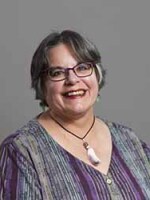Listen to the story above or read the script below:
Bossa nova came out of a brief period of democracy in Brazil, from the early 1950s to the mid-60s, between two spells of military dictatorship.
During that time, there was a strong renewed sense of national pride. If you were Brazilian, you just LOVED everything about being Brazilian.
The new democratic government reduced state control of the recording industry, so the music business had an opportunity to expand.
The middle class also expanded, and had more buying power. Bossa nova reflected the comfortable, financially stable, well-educated class, sitting in their fine apartments facing the beach in Rio, rather than looking back at the city and the Morro, the hills, where the poor and working class Black people lived in shanty towns called favelas. They still do.
At that time of renaissance, when the arts were blossoming, bossa nova was a poetic movement, a lyrical movement. Bossa nova became almost like sacred music to Brazilians.
Bossa nova, or the “new thing,” was based on samba, with a gently swaying rhythm and a touch of "saudade," or nostalgia; a tender longing for what was, or what might have been.
Where samba songs usually refer to public and political issues, the bossa nova focused on the individual and the personal.
Bossa nova songs are all about the sunset, the beach, the smile, the flower and love, preferably all in Brazil.
Instrumentation in bossa nova was purposely simple: a guitar, maybe two; or a single-note piano accompaniment. The focus was mainly on the lyrics.
One of bossa nova’s chief architects was lyricist, linguist, poet and diplomat Vinicius de Moraes. He wrote lyrics based on the way Brazilian Portuguese is spoken, with its natural rhythmic syncopation.
When sung in English, which tends to accent on the first syllable of each phrase, those beautiful songs can sound more like a march, or even like lounge music.
Vinicius de Moraes’ operatic musical, Orfeu Negro (Black Orpheus), started his relationship with songwriter Antonio Carlos Jobim, and their work together defined the genre of bossa nova.
In the early 1960’s American jazz artists like guitarist Charlie Byrd, and saxophonists Stan Getz and Cannonball Adderley discovered samba and bossa nova, and they made some very successful recordings in those styles.
But by the mid-60’s, while it was still a favorite of North American audiences, bossa nova was on its way OUT in Brazil, being replaced by MPB: música popular brasileira, and tropicália; two musical forms that deliberately used elements of Brazilian indigenous music, traditional African rhythms and North American-style rock and roll.
In 1964, another military coup in Brazil brought back restrictions on free speech and on all of the arts. Brazilian musicians turned away from the sweet bossa nova and began to write covert protest songs.
But that’s a whole other story.








